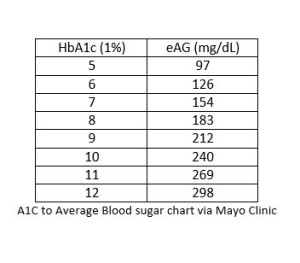What to do with an A1C ? For the experienced clinician, this is a very simple question, but I occasional see orders for A1C’s at a rate more frequently than every three months. Remember that it is basically an average blood sugar over a period of approximately three months. This can vary a little bit, but thinking about this fact, what value would an A1C monthly provide?
If you ever seen an order for a monthly A1C or even more frequently than that, question it with boldness 🙂 I’ve seen a few recently where medication changes have been made and then two weeks or a month later an order for an A1C. I suspect in the majority of cases I’ve come across, it is an oversight by the primary provider. The only potential benefit you could get from checking it more frequently than every three months is to get an overall trend in the direction of the A1C. However, we can easily do this through blood sugar monitoring. Blood sugar checks are instantaneous and ideally should be varied throughout different times of the day to really get a full picture of how blood sugar fluctuates.
Here’s an example where A1C alone (without blood sugars) can be totally misleading. 77 year old with Type 2 diabetes currently taking glipizide 5 mg daily. A1C is 6.4. Great A1C right? Great diabetes care right? At goal right? The number is good, but this is an average. This patient had blood sugars ranging from the 40’s to 400’s. When you see an A1C remember that it contributes to the story, but it doesn’t complete the story, and sometimes may even be misleading.
That same patient could have blood sugars from 80-200 and be extremely well managed, but the A1C alone cannot give you that information.
Here’s another post on blood sugar management and use of Sliding Scale
If you’re new to the blog, you have to check out 30 medication mistakes for healthcare professionals – a free resource for subscribing based upon my experiences as a clinical pharmacist



Is 6.1 condesidered type 2 Diabetez